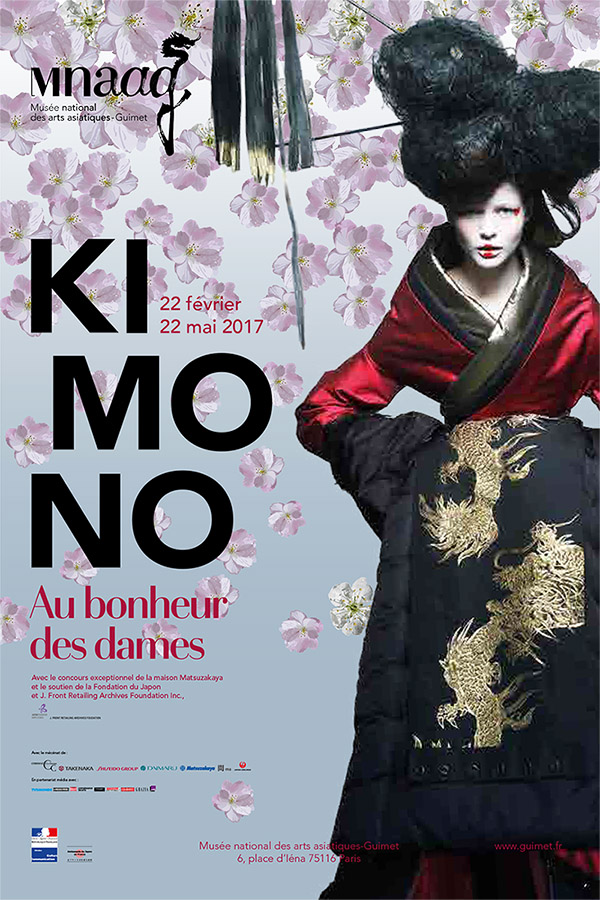

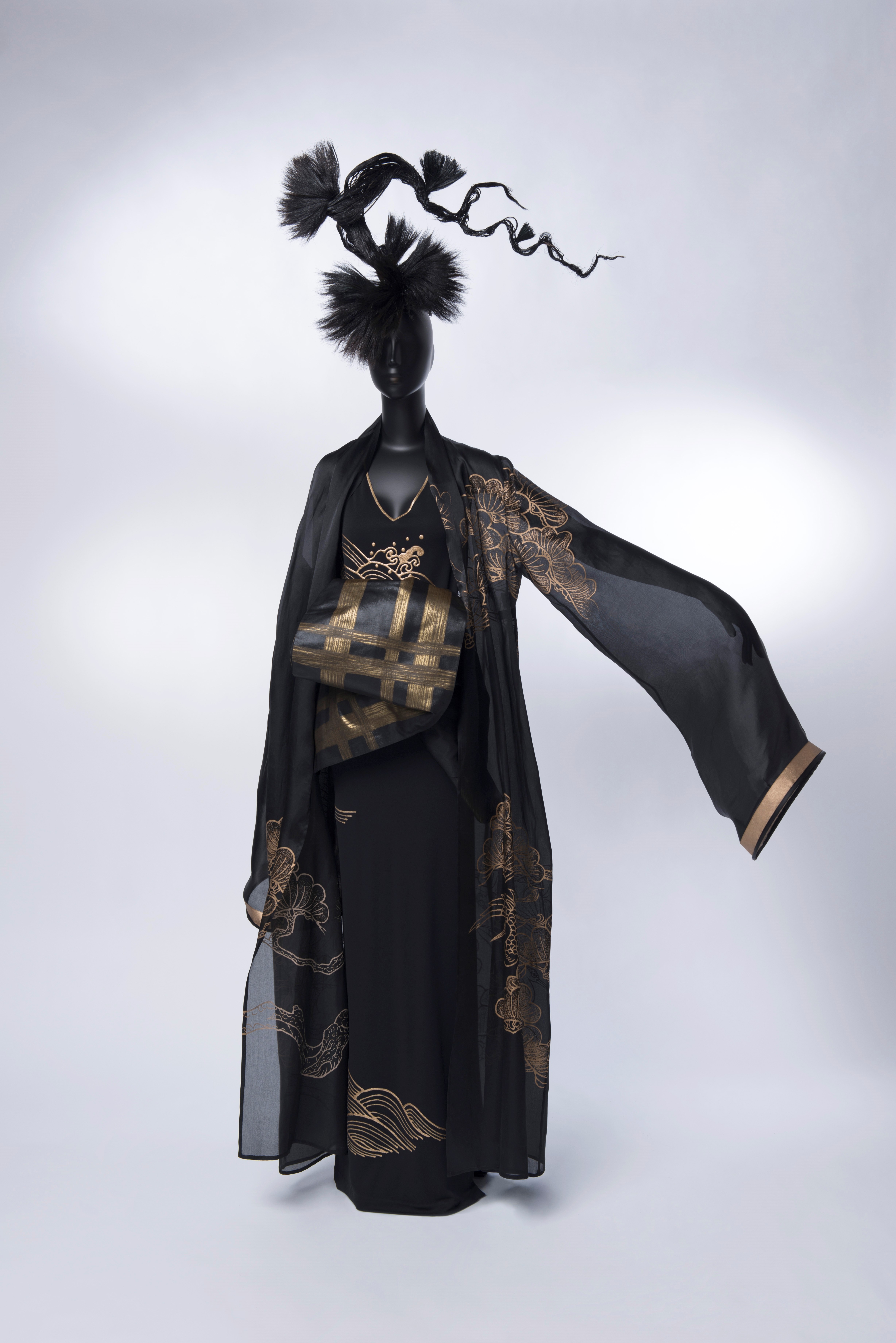
コシノジュンコは、一般財団法人J.フロントリテイリング史料館(以下、J.フロント史料館)と独立行政法人国際交流基金、フランス国立ギメ東洋美術館(以下、ギメ美術館)が2017年2月22日(水)~5月22日(月)フランス・パリのギメ美術館において、「Kimono, au bonheurdes dames展」(着物・オ・ボヌール・デ・ダム展)にアーティスティックアドバイザーとして参加。安土桃山時の着物から江戸の小袖から明治の松坂屋コレクションの変遷の展示、また現代の着物からインスパイヤされた日本人デザイナーとフランス人デザインの展示の2部構成。コシノジュンコのほかに、ポール・ポワレ、カロ姉妹、マドレーヌ・ヴィオネ、イヴ・サンローラン、ジャンポール・ゴルチェ、ジョン・ガリア―ノ(dior)、フランク・ソルビエ、高田賢三、三宅一生、山本耀司、川久保玲の作品が展示される。
Kimono – The ladies’ delight
22 february – 22 may 2017
The exhibition will outline the evolution of the kimono and its accessories to elucidate their reinterpretation in contemporary Japanese and French fashion. For the first time articles from the Matsuzakaya collection will be shown outside of Japan. Founded in 1611, the celebrated firm played a major role in producing and diffusing the kimono, especially within the military nobility, Some 150 highly prestigious pieces tell the story of the evolution of this essential garment in the Japanese wardrobe from the Edo Period (1603-1868) up to the contemporary period. Japanese fashion designers, like Issey Miyake, Kenzo Takada, and Junko Koshima constantly sought their inspiration in this emblematic and universal garment that sublimates Western haute couture today. First worn as an under-garment by the aristocracy before being adopted by the Samurai class as outer clothing, the kimono soon became a normal outfit for every class of the population. Originally called “kosode”, it is the Japanese clothing par excellence. Visually intense and laden with meaning – it attained its decorative apogee before the mid-18th century -, the kimono stimulated a highly creative textile industry whose techniques combine complexity and patience: textiles knotted and carefully resist-dyed, precious fabrics with complex weaves and gold thread; wedding kimonos, young girls’ kimonos, etc… It was not until the mid-19th century that it was worn in France by women of fashion as a dressing gown when Japanism gave rise to the Impressionist artistic trend referring to the Land of the Rising Sun. At the turn of the 20th century the French haute couture adopted the kimono, and the same inspiration can be found in fashion designers like Paul Poiret (1879-1944) or Madeleine Vionnet (1876-1975), whose floating creations with flowing sleeves borrowed the kimono’s ample conceptions. Today many Japanese fashion designers like Yohji Yamamoto claim its influence, as well as Yves Saint Laurent, Jean Paul Gaultier, John Galliano, or Franck Sorbier, who draw their inspiration from Japan by reinterpreting the structural codes of the kimono, granting it a preeminent role on the artistic scene. Particularly fragile works, the exceptional antique kimonos of the Matsuzakaya firm will all be replaced in the course of the exhibition early in April.
MORE EVENT
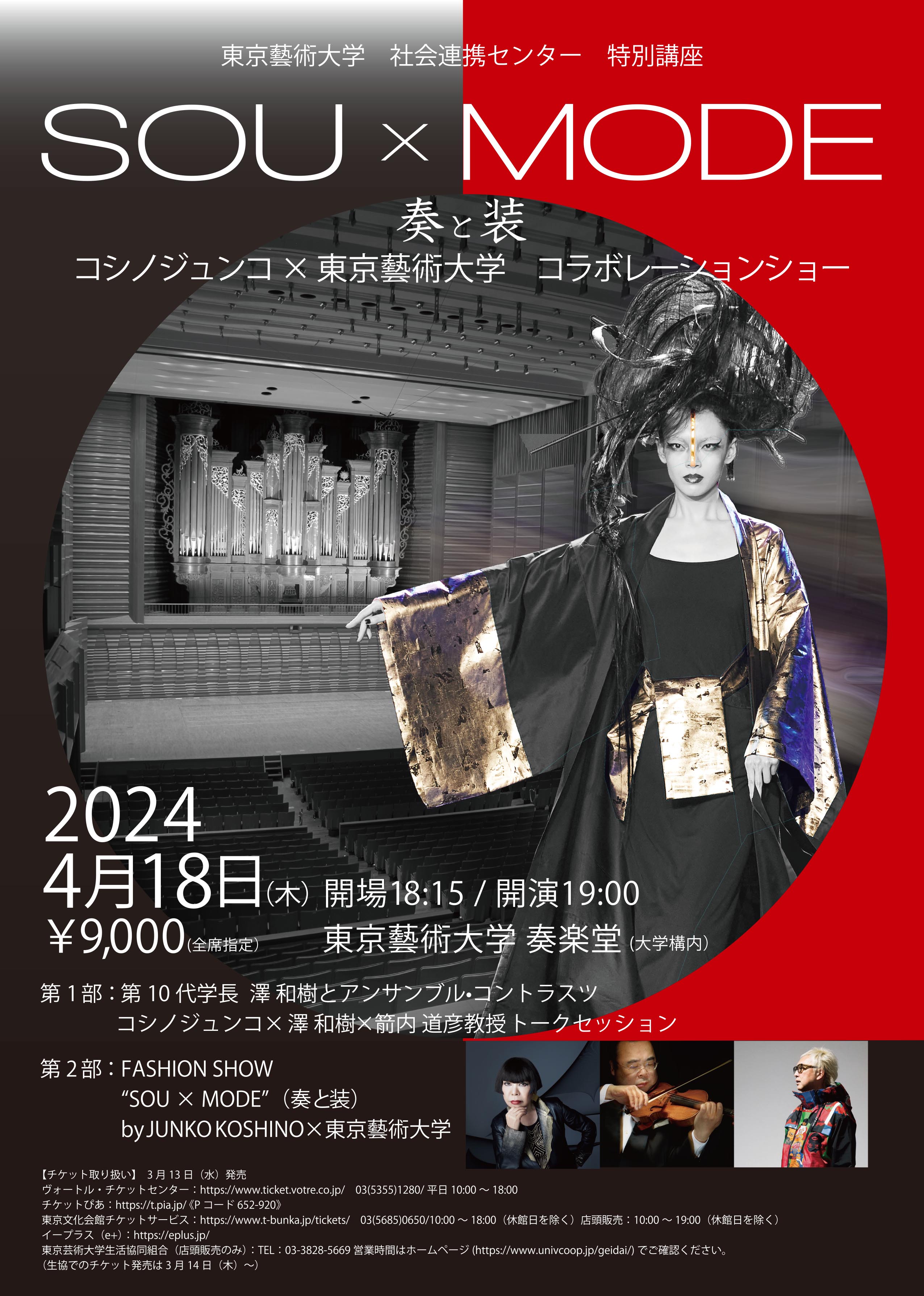
SOU×MODE 奏と装 コシノジュンコ×東京藝術大学 コラボレーションショー
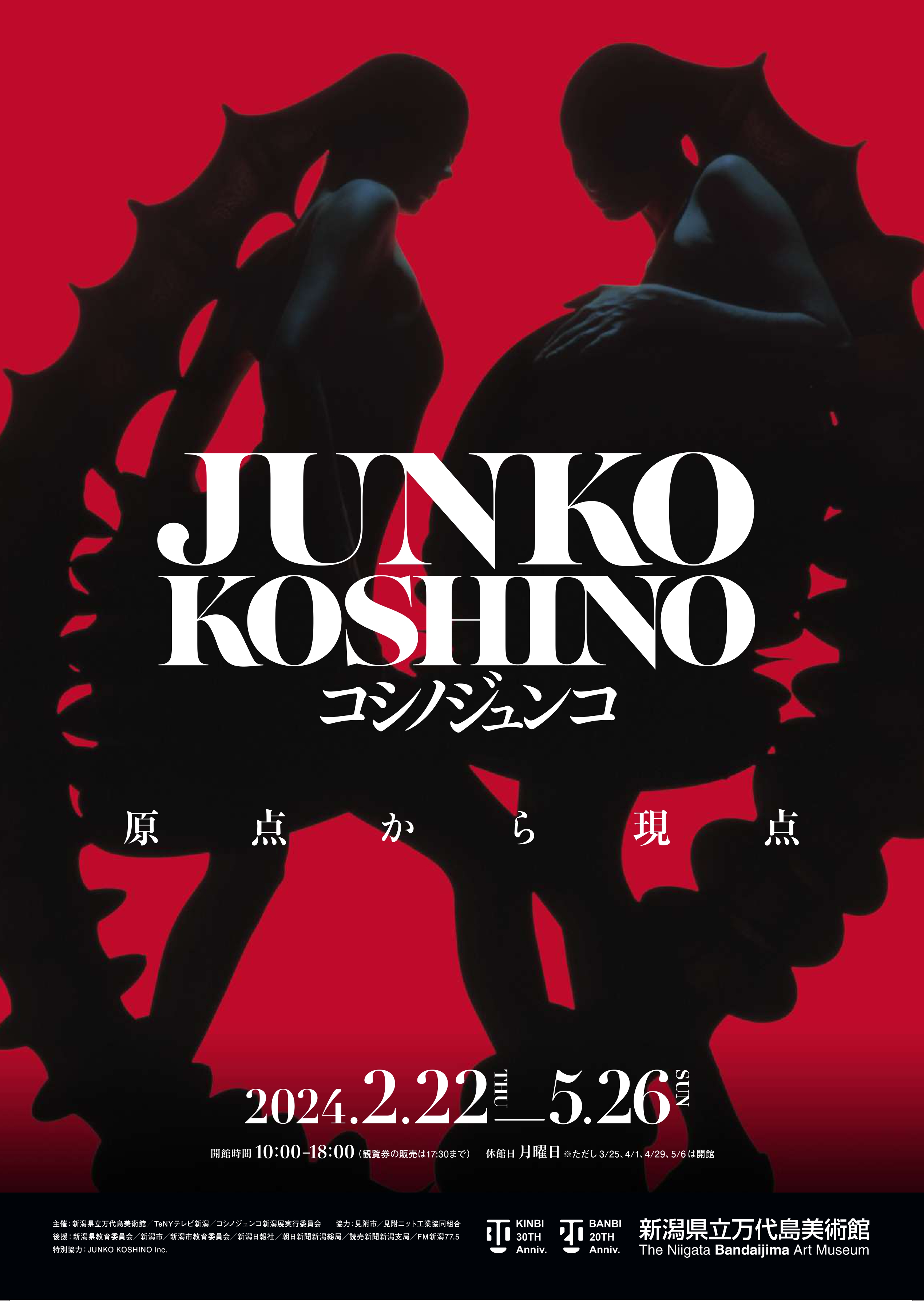
コシノジュンコ「原点から現点」新潟県立万代島美術館

DRUM TAO 2023 ファイナル特別公演
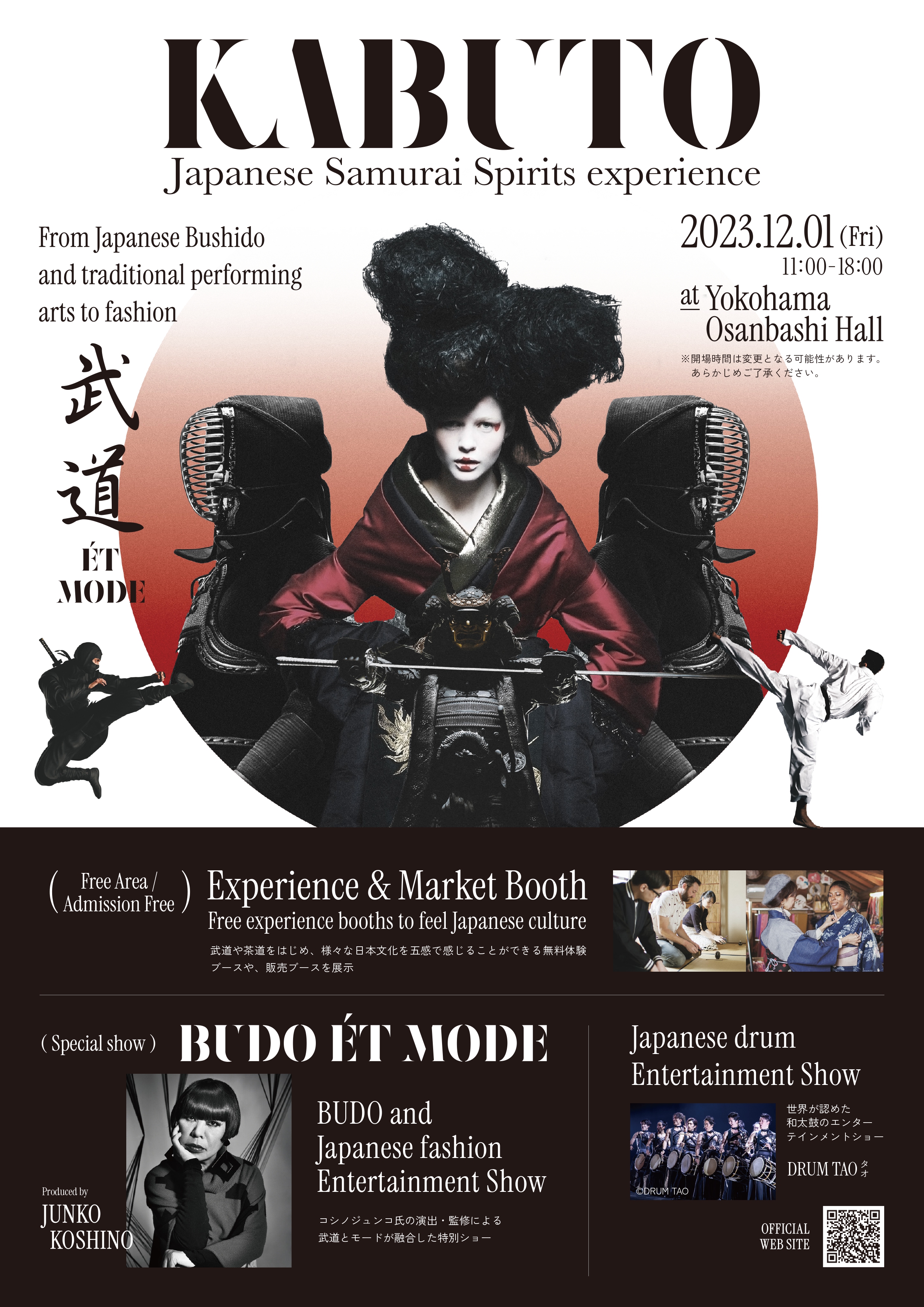
KABUTO Special Show「 BUDO ÉT MODE 」

コシノジュンコ「原点から現点」あべのハルカス美術館
MORE FASHION
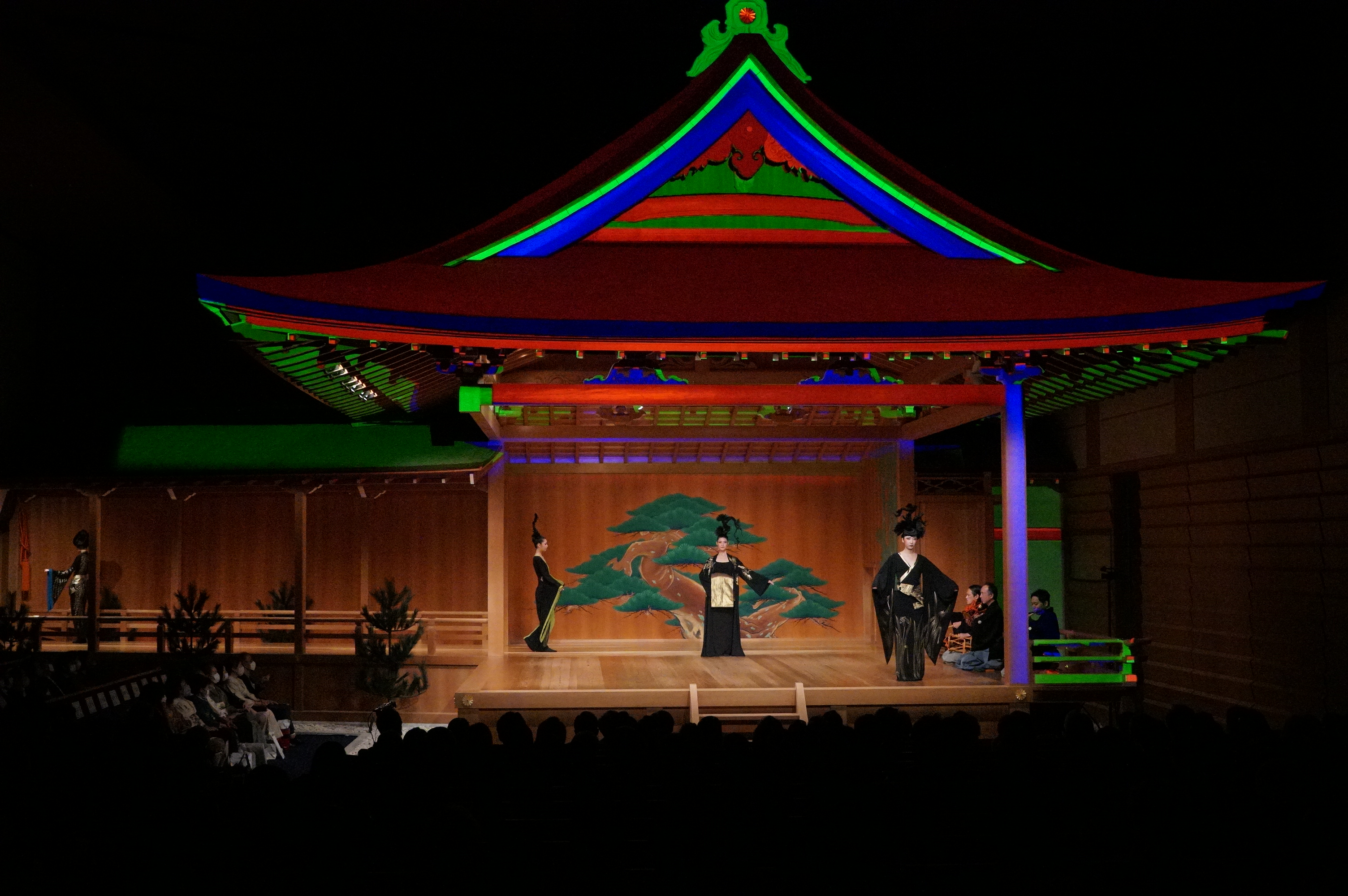
NOH+FASHION コシノジュンコと二十六世観世宗家 観世清和の世界

能+FASHION 観世能楽堂GINZA SIX
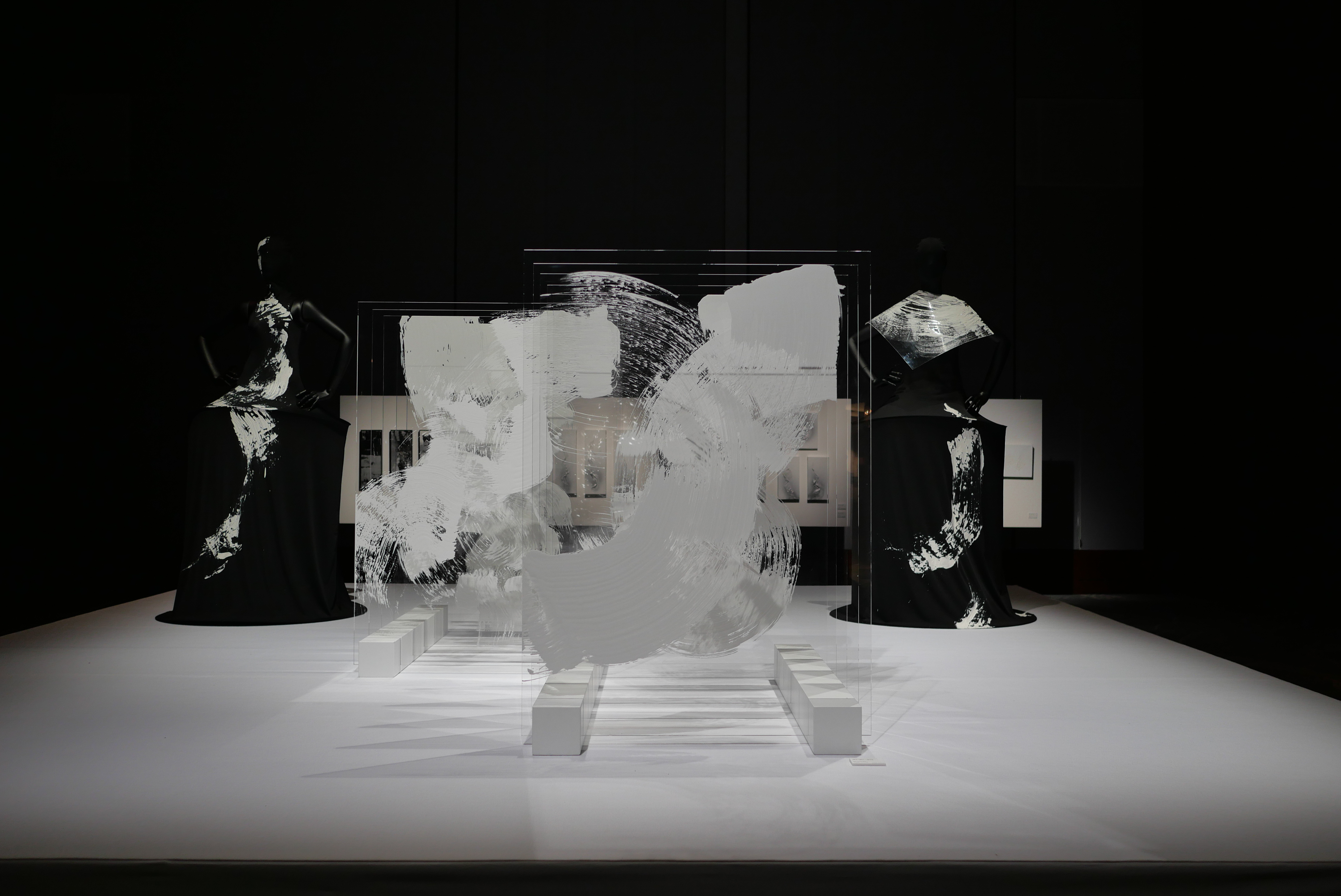
ART GALA DINNER BY JUNKO KOSHINO
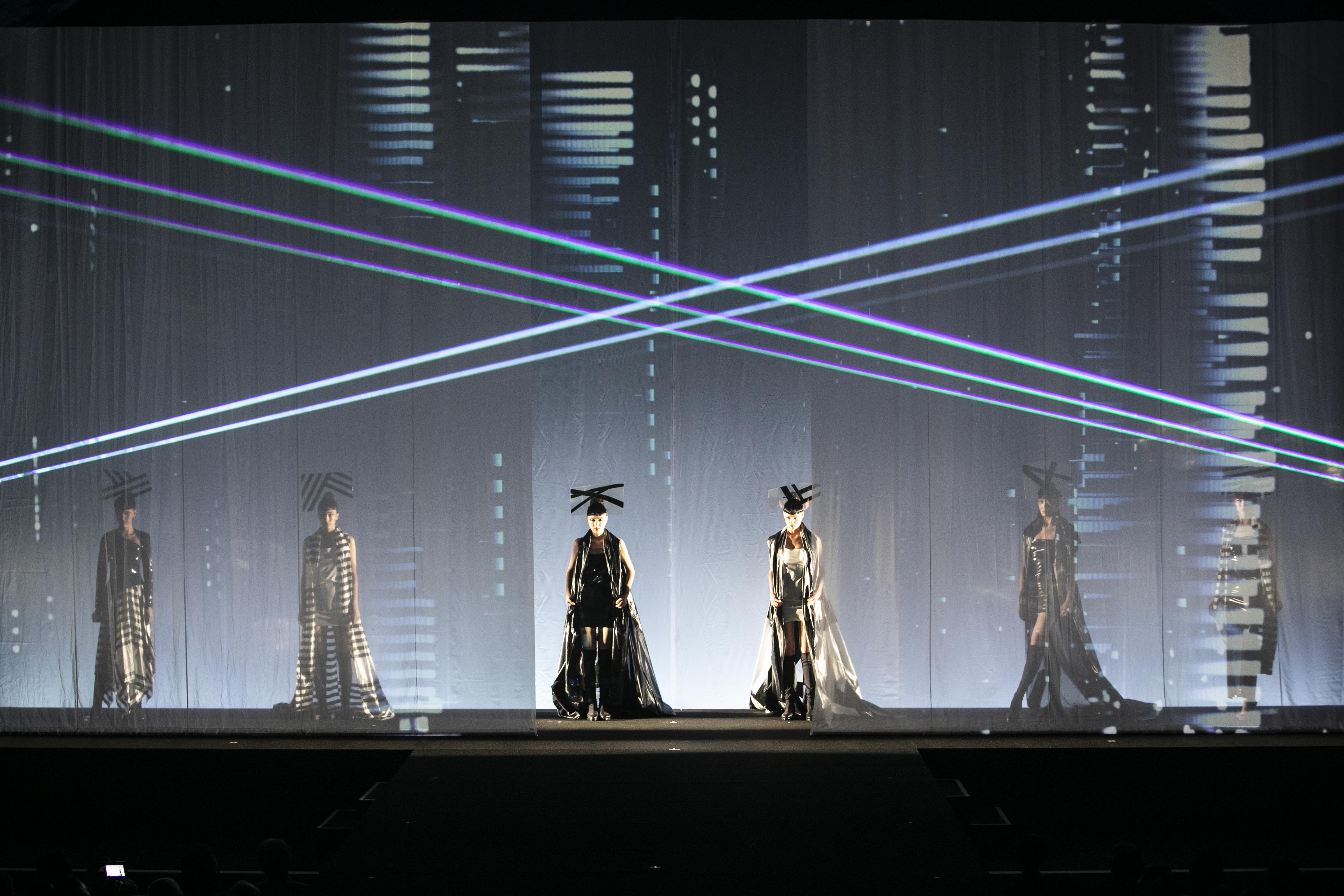
“SENSE” – RAKUGO+FASHION –

浜離宮大江戸文化芸術祭2019
MORE NEWS
